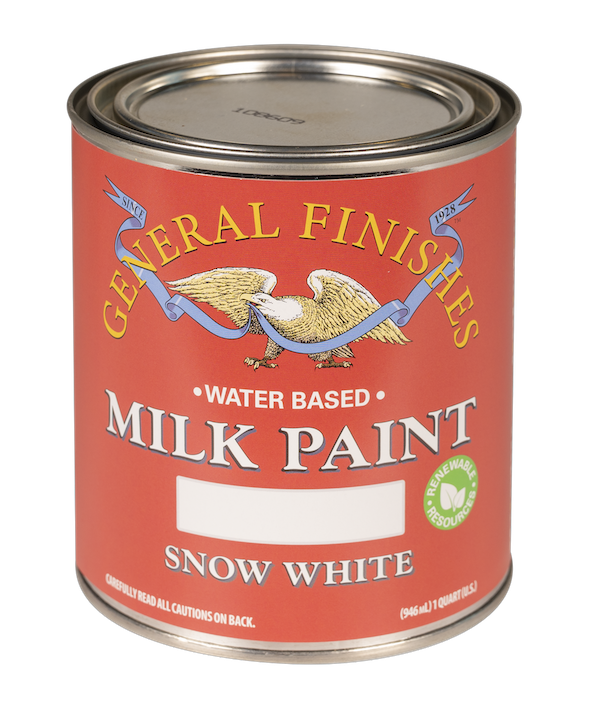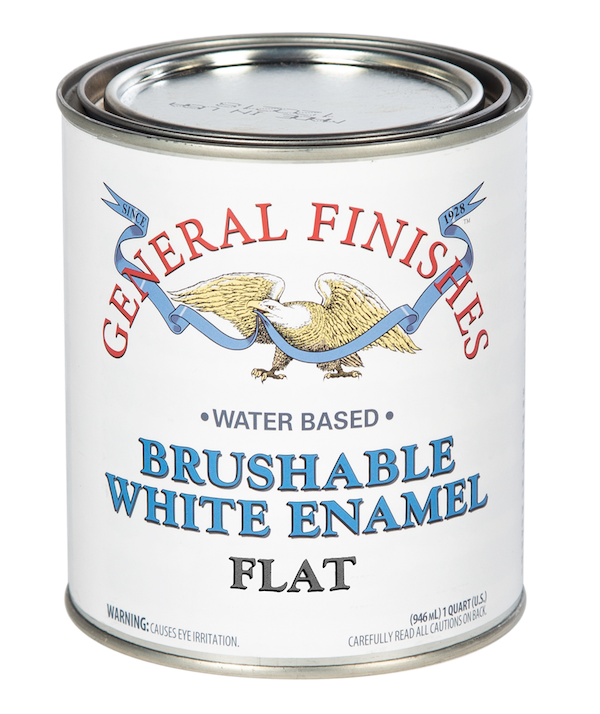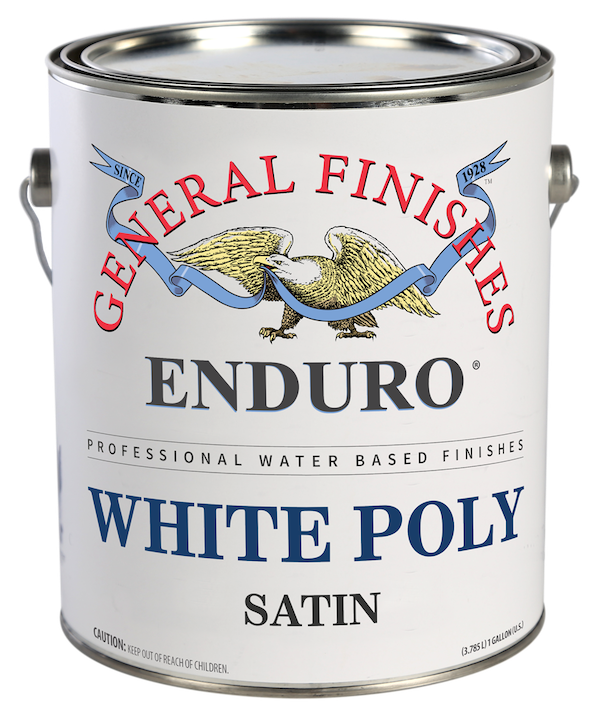How to Choose a White Paint
There are several factors to take into consideration if you want to use a white paint. We'll walk you through every step of the decision making process!
Why does white paint yellow?
All bright white paint will yellow slightly with time, even without topcoat. It is the nature of oxidation. You have probably tried to touch up white woodwork in your home after several years and noticed that the new paint is brighter. But white and light paints can shift color even more if clear coated with a water-based finish. Water-based topcoats are reactive and may draw out substances in the wood such as tannins in raw woods and dyes or unknown substances in existing finishes causing the topcoat to yellow. This is an industry-wide issue and can happen right away, years later or never.
What you need to know about white paint.
- The underlying finish or wood species can affect the final color of light paint.
- Details and inside corners are difficult to cover with any paint color, but this property tends to be more noticeable with whites. This is a naturally occurring phenomenon in paint application and does not necessarily constitute a defect in the paint finish or your technique.
- The more porous the paint (chalk paint vs an acrylic paint), the more likely that yellowing will occur. The topcoat is actually migrating through the spaces caused by the larger particles of filler that give chalk style paints their texture.
- Cabinet grade white paints have a lower hide quality and are more transparent than other colors. Most bright whites require additional coats to achieve the desired saturation and minimize color variation. This can increase the cost of paint finishing. Always include a clause in your contracts addressing the need for additional coats to achieve coverage.
How do I know if my paint will yellow?
There is no way to reliably predict yellowing ahead of time. Every existing finish is different and we rarely know the finishing provenance on a previously finished piece. Every tree is different; every piece of wood is unique. Wood can bleed tannins immediately after the topcoat dries or months later with a change in temperature that comes with a change in seasons. Oak, pine, mahogany, and Douglas Fir are particularly prone to bleed-through.
Throughout all of our testing, General Finishes water-based topcoats are clear drying over a non-reactive substrate such as plastic or metal but when applied to something as unpredictable as wood, it is best to play it safe.
How can I avoid yellowing?
- Don't apply any clear coat when using light or white paints. Topcoat is perfectly fine over darker colors.
- If you want a light or white color, use a primer followed by two-three coats of a self-sealing paint or a pigmented topcoat instead. General Finishes offers three types of self-sealing products to achieve white of light colors without yellowing.
Milk Paint (Brush, roll or spray): A clear topcoat is not required over Milk Paint. It is a self-sealing, exterior rated coating with very high-performance properties. However, higher sheen topcoats provide a smoother surface that is easier to clean for high use projects such as tabletops and kitchen cabinets. If you want a higher sheen, use Brushable White Enamel or spray our pigmented Enduro White Poly.
Brushable White Enamel (Brush, roll or spray) was developed as a stand-alone finish (no topcoat required) for those who want a bright white but do not use spray equipment. (available in Flat, Satin or Semigloss)
Enduro White Poly (Spray. Face frames can be rolled): Use a professional sprayable "pigmented topcoat" such as our Enduro White Poly. It is a white paint with "increased topcoat properties", is a stand-alone finish when 3 coats are applied and does not require sealing with a topcoat. (available in Flat, Satin or Semigloss)
Tinting - check with your local retailer.
Brushable White Enamel and Professional Enduro White Poly can be tinted to most light or pastel colors with zero VOC UTC colorants.
Do I need a primer under light or white paint?
Yes! Always prime white paint within the General Finishes paint system. Let any brand of primer dry overnight when using with General Finishes products. Many primers suggest a 3-hour dry time and that is not enough.
How to choose your primer:
- Over an existing finish or high tannin raw wood, use Stain Blocker, a chemical primer that is designed to block tannins in raw wood or dyes and pigments in existing finishes. (Note: nothing can stop the eventual bleed through of pine knots.)
- Over low tannin raw woods such as poplar or maple use professional Enduro White Undercoat, a high solids physical primer that is engineered for easy sanding, fast build and a lower price point.
- Choose by application method (but don't worry, this course will teach you to spray): General Finishes Stain Blocker and Brushable White Enamel for users who want a brush, roll or spray application. If you prefer to spray, use Enduro Professional White Undercoat and professional Enduro White Poly White Undercoat. Face-frames can be rolled.
Low- to Medium-Wear Surfaces, such as:
Dressers, End Tables
- Prime light colors of Milk Paint with Stain Blocker
High-Wear Surfaces, such as:
Kitchen Cabinet,
Table Tops
- Brushable White Enamel or professional Enduro White Poly
- Prime with Stain Blocker or professional Enduro White Undercoat
Professional Use (Emphasis on On-Site Production)
Brushable White Enamel is a favorite of professional finishers, who use it to roll the face frames on site while spraying doors with Milk Paint or professional Enduro White Poly.
Click here for more information about white paint for professionals.
Do you refinish professionally?
Do not carry the cost of white paint yourself!
White paints, even if they did not yellow, require more coats and high-quality primers for full coverage.Include the cost of the increased labor for applying white paints with a fair, reasonable up-charge. Use disclaimers in your contracts and never guarantee a white finish over a piece when the customer cannot give the history of appled cleaning agents.
Here is a suggestion for your contracts:
Terms of Agreement and Warranties: ____ (Initials) I have been informed that more coats are required when painting with bright whites, reds, greens or yellows. I understand that white paint can yellow over time and water-based topcoats can react with the substrate or existing finish under white paints causing yellowing, even if a stain-blocking primer is used. I have been informed that topcoat over white or light paints should NOT be used.
Frequently Asked Questions
Click the question to see the answer.
Fix Yellowing
Brushable White Enamel
How to achieve a white finish with General Finishes
Let's get back to the course!
Copyright General Finishes. Privacy Policy.




